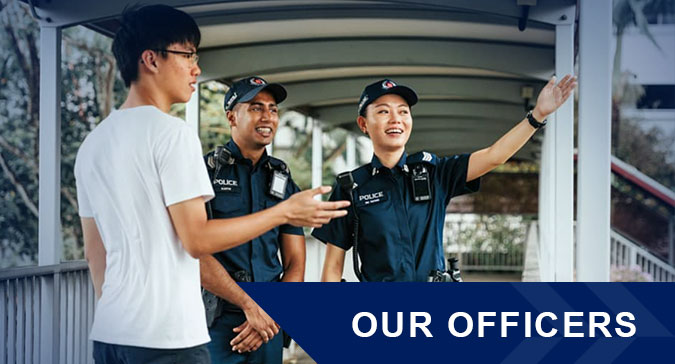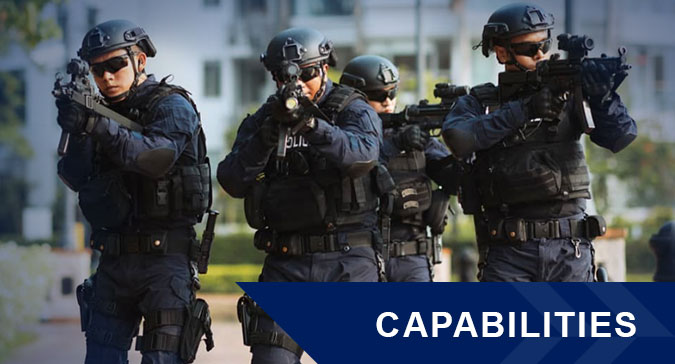We delve into the compelling history of the Sikh Contingent, one of the fascinating threads in the distinguished heritage of the SPF!
By: Sgt (NS) Mohammed Reza and Domnic Dass

In the 1870s, the Straits Settlements Police Force faced significant challenges in carrying out its duties. Crime rates were high and secret societies wielded much influence, committing offences such as the trafficking of arms, narcotics, and people. To address these issues, a Police Commission was established, and one of its recommendations was the introduction of a Sikh Contingent to strengthen the Force.

Why Were the Sikhs Chosen?
The colonial government considered the Sikhs to be soldiers with an unwavering sense of loyalty, as demonstrated in the Anglo-Sikh Wars and Indian Rebellion of the 1800s. Successful policing by the Sikhs in the Federated Malay States and Hong Kong also reinforced British confidence that they could serve as the core of an excellent Police Force, helping to enhance Singapore’s security and, in turn, promote economic opportunities.

The Sikh Contingent
In November 1881, a full Sikh Contingent, comprising 165 men, assembled in Singapore. Recruits had to be at least 175cm tall with a chest measurement of more than 96.5cm. Those who met the criteria underwent a medical examination, swore an oath before a magistrate and were baptised at the Contingent’s Gurdwara (or temple) for oaths of honesty and faithfulness.

Baptism was mandatory for all Sikh Contingent officers as the British believed it ensured staunch and exemplary conduct. Recruits were required to adhere to the code of conduct for baptised Sikhs, including leaving their hair, beards, and moustaches uncut, and wearing a turban. British officers enforced these standards through regular inspections.
Duties of the Sikh Contingent
Sikh Contingent officers were primarily tasked with handling public order incidents and maintaining peace in town. In fact, a Sikh Contingent riot squad comprising 50 officers was always on standby. This squad served as an effective deterrent against unrest, as troublemakers were often intimidated by their towering presence.

The Sikh Contingent was also deployed for assignments far from Singapore’s shores. Officers stationed on Christmas Island (then part of the Straits Settlements) were entrusted with quelling disturbances there. Several strikes had taken place on the island in the early 1900s, and Sikh Contingent officers dealt with the unrest so effectively that they were once credited for having stamped out a strike almost as soon as it started.

In addition to dealing with public order situations, Sikh Contingent officers also served as guards at government buildings and other key installations. They were also deployed for guard duties on special occasions or ceremonies such as the Governor’s swearing-in, as well as the opening of the assizes (or courts). On occasions, they even received prominent foreign dignitaries and served as their bodyguards during their stay in Singapore.

Following the Contingent’s satisfactory performance, it was given additional responsibilities. The Contingent took on beat and traffic duties, a testament to the officers’ adaptability in meeting the Force’s requirements.
Ties with the Sikh Community
The establishment of the Sikh Contingent in 1881 also marked the beginnings of Singapore’s Sikh community. The first Sikh temple, the Sikh Police Contingent Gurdwara, was erected a year later. The British prioritised meeting the needs of the Sikh Contingent to secure loyalty, appointing a granthi (or priest) from the Contingent.

The Gurdwara soon welcomed Sikh civilians on Sundays and weekdays. Civilians started using the religious grounds for ceremonies and sent their children to the Police Contingent granthi for their education. The Sikh Police Contingent Gurdwara served as the primary Sikh place of worship before it was succeeded by the Queen Street’s Gurdwara.
Following the First World War, the Sikh Contingent contributed to building the Silat Road’s Gurdwara in 1924, fostering the growth of the Sikh community.

After the Second World War, the Contingent was disbanded. But its legacy endures through the vibrant history of the Sikh community in Singapore, and as one of the many threads in the distinguished heritage of the Singapore Police Force.










